
Zabbix技术分享——如何使用zabbix监控华为云RDS
在数字化大背景下,数据是重要的生产资料,这些数据存放在哪里,如何保障数据安全是所有企业都要考虑的事情。华为云RDS凭借安全可靠,可根据业务规模动态扩容的特性,受到越来越多中小企业的青睐,对华为云RDS监控的需求也随之增长。本文将介绍如何使用Zabbix监控华为云RDS。一、思路•通过华为云RDS实例列表接口获取RDS实例,用于资源的自动发现•通过华为云CES获取监控数据准二、准备工作•用于访问华为
在数字化大背景下,数据是重要的生产资料,这些数据存放在哪里,如何保障数据安全是所有企业都要考虑的事情。华为云RDS凭借安全可靠,可根据业务规模动态扩容的特性,受到越来越多中小企业的青睐,对华为云RDS监控的需求也随之增长。本文将介绍如何使用Zabbix监控华为云RDS。
一、思路
•通过华为云RDS实例列表接口获取RDS实例,用于资源的自动发现
•通过华为云CES获取监控数据准
二、准备工作
•用于访问华为云的AK/SK
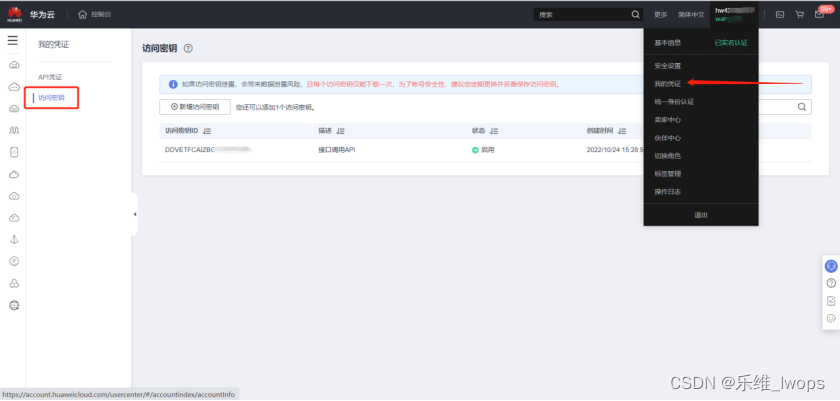
•python3环境
•用于调用华为云api的相关模块依赖 https://github.com/huaweicloud/huaweicloud-sdk-python-v3
三、编写实例自动发现脚本
#!/bin/python3
coding: utf-8
from huaweicloudsdkcore.auth.credentials import BasicCredentials
from huaweicloudsdkrds.v3.region.rds_region import RdsRegion
from huaweicloudsdkcore.exceptions import exceptions
from huaweicloudsdkrds.v3 import *
import json
if name == “main”:
#这里填访问密钥
ak = “”
sk = “”
credentials = BasicCredentials(ak, sk) \
client = RdsClient.new_builder() \
.with_credentials(credentials) \
.with_region(RdsRegion.value_of("cn-north-4")) \
.build()
try:
request = ListInstancesRequest()
response = client.list_instances(request)
response = json.loads(str(response))
#拼接成用于自动发现的json数据,id为RDS的实例ID,name为RDS的名称
r = []
for i in response['instances']:
buf = {'{#INSTANCE}':i['id'],'{#INSTANCE_NANME}':i['name']}
r.append(buf)
print(json.dumps({"data":r}))
except exceptions.ClientRequestException as e:
print(e.status_code)
print(e.request_id)
print(e.error_code)
print(e.error_msg)
四、编写监控数据获取脚本
#!/bin/python3
coding: utf-8
from huaweicloudsdkcore.auth.credentials import BasicCredentials
from huaweicloudsdkces.v1.region.ces_region import CesRegion
from huaweicloudsdkcore.exceptions import exceptions
from huaweicloudsdkces.v1 import *
import json
import time
import sys
#传入的监控项
key = sys.argv[1]
#请求时间戳
from_time = int(round(time.time() * 1000)-300000)
to_time = int(round(time.time() * 1000))
if name == “main”:
#这里填访问密钥
ak = “”
sk = “”
credentials = BasicCredentials(ak, sk) \
client = CesClient.new_builder() \
.with_credentials(credentials) \
.with_region(CesRegion.value_of("cn-north-4")) \
.build()
try:
request = BatchListMetricDataRequest()
listDimensionsMetrics = [
MetricsDimension(
name="rds_cluster_id",
#这里是实例ID,可改为变量,模板宏即{HOST.HOST}
value=""
)
]
listMetricsbody = [
MetricInfo(
namespace="SYS.RDS",
metric_name=key,
dimensions=listDimensionsMetrics
)
]
request.body = BatchListMetricDataRequestBody(
to=to_time,
_from=from_time,
filter="max",
period="1",
metrics=listMetricsbody
)
response = client.batch_list_metric_data(request)
res = json.loads(str(response))
instance = json.dumps(res)
instances = json.loads(instance)['metrics']
for i in instances:
#取最新的一个值
print(i['datapoints'][0]['max'])
#print(i)
except exceptions.ClientRequestException as e:
print(0)
#print(e.request_id)
#print(e.error_code)
#print(e.error_msg)
五、新增模板
•新增自动发现规则,用于实例自动发现
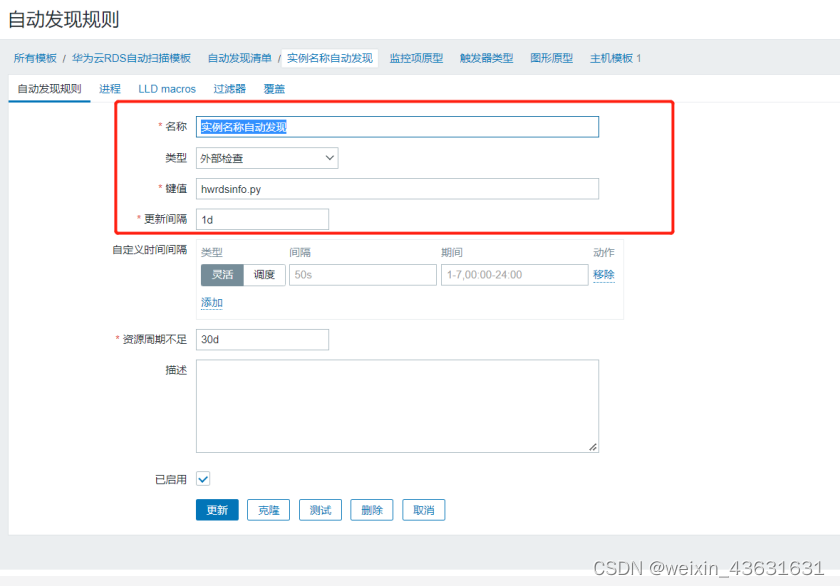
•自动发现规则,链接监控数据获取模板
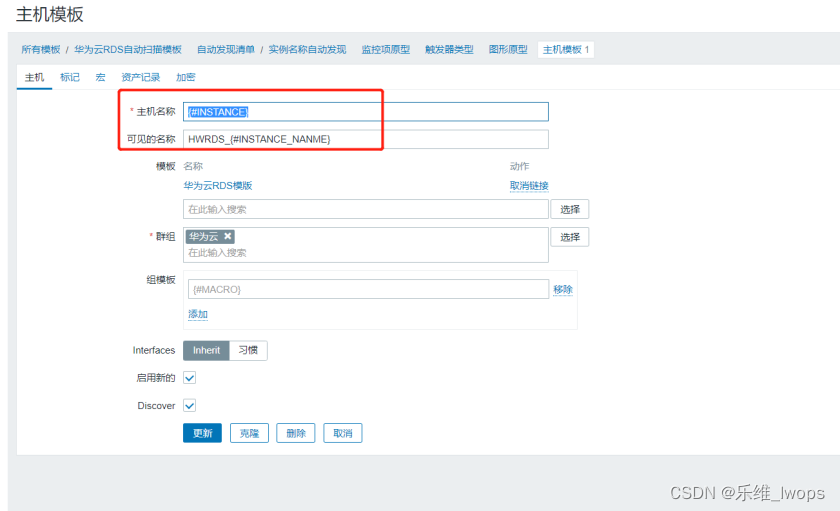
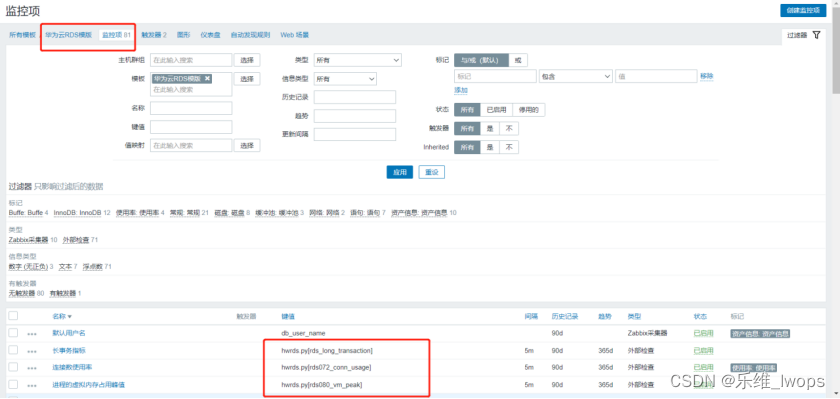
六、验证
•验证是否可以正常发现实例
新增主机,链接华为云RDS自动扫描模板后,点自动发现规则,可以正常获取到数据

•验证监控数据是否获取正常
点击发现出来实例,测试监控项可以正常获取到数据
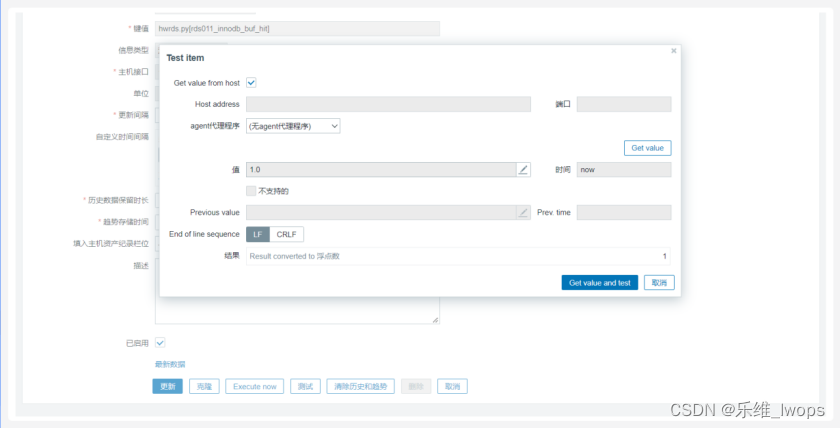
以上即为使用Zabbix监控华为云RDS的操作过程。
这一期的Zabbix的技术分享到这就结束了,更多Zabbix内容直接关注乐维社区(https://forum.lwops.cn/),专注运维技术分享,关注我,运维更无忧。
更多推荐
 已为社区贡献3条内容
已为社区贡献3条内容








所有评论(0)